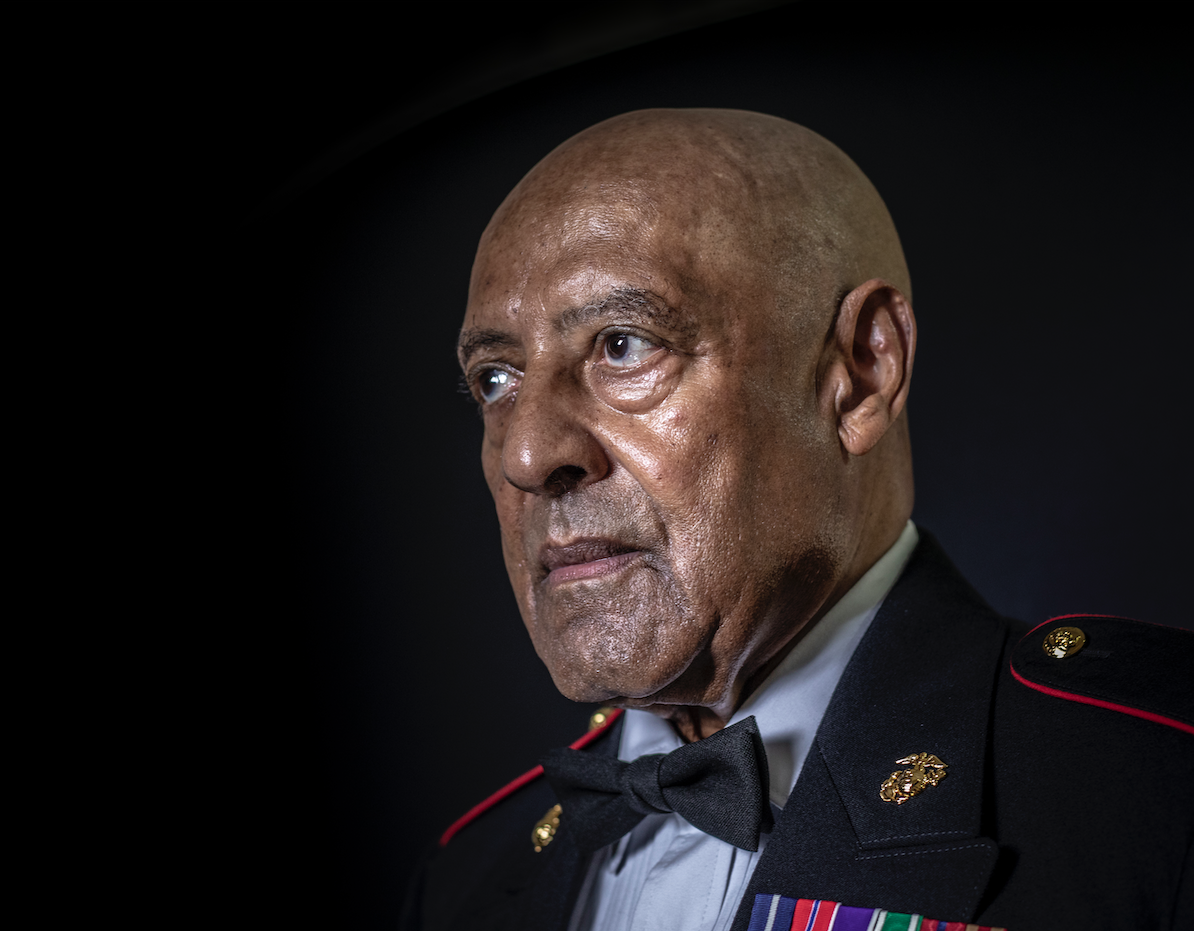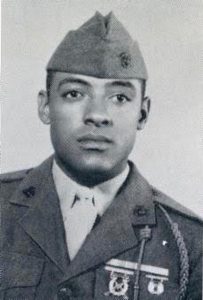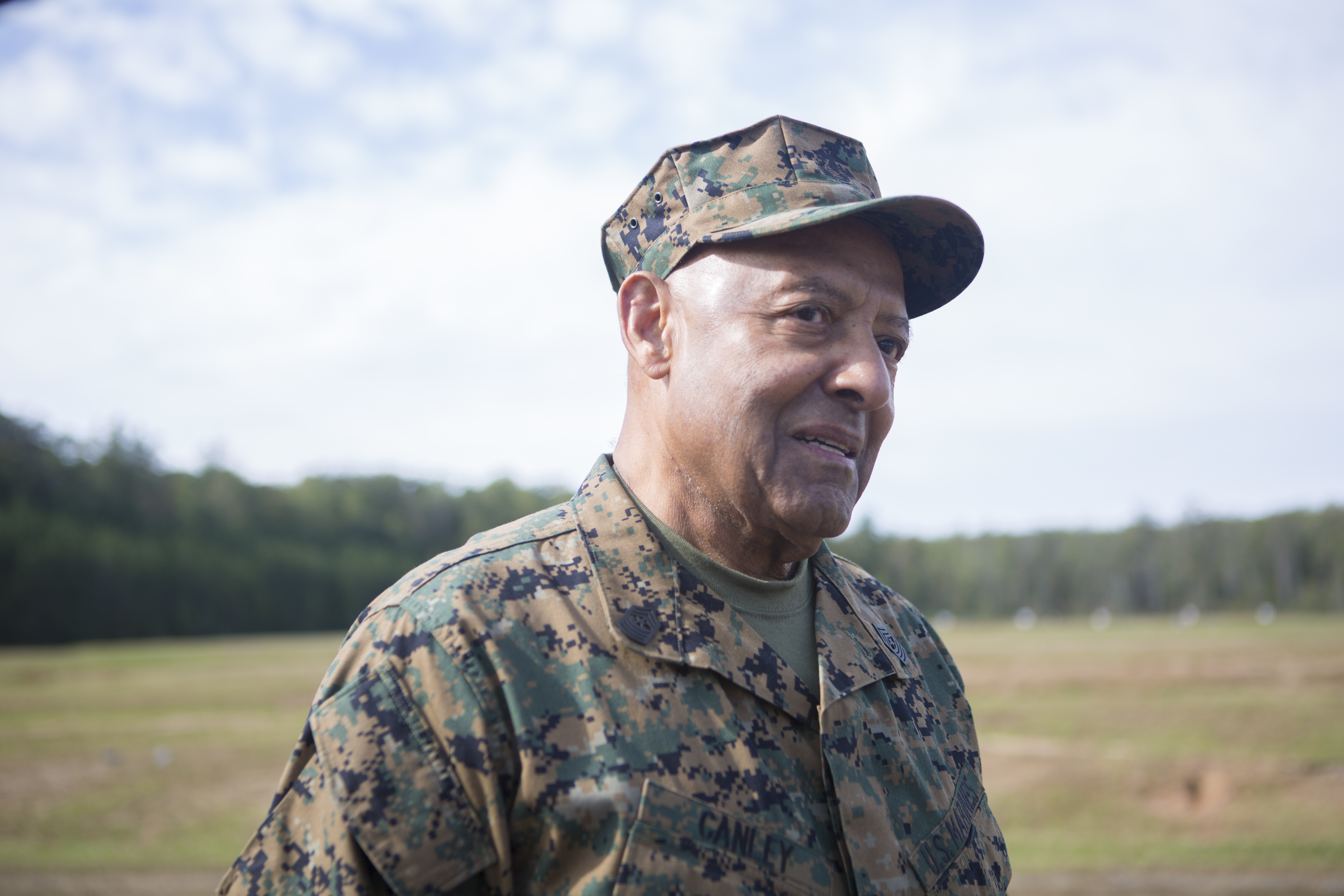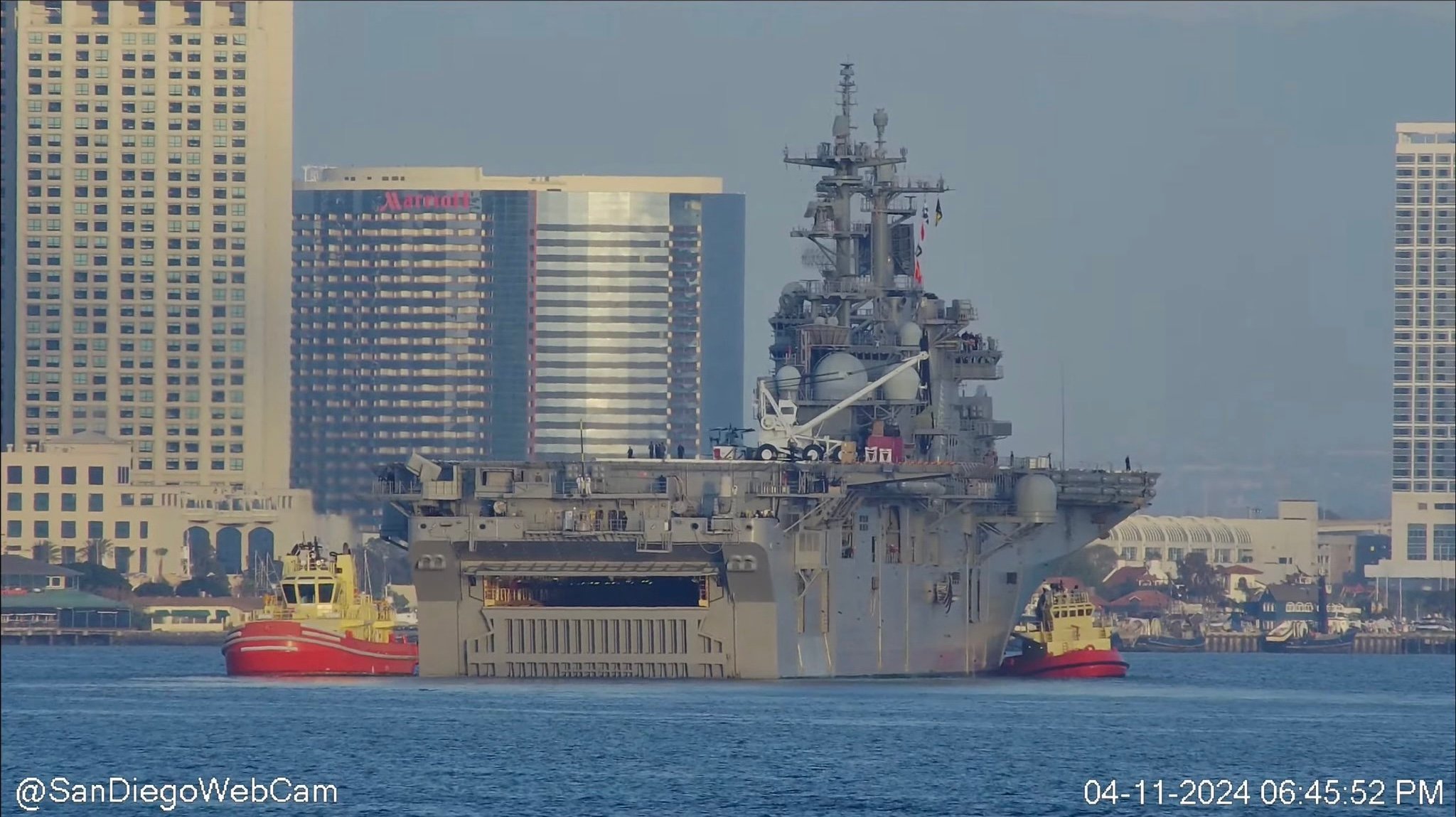
Retired Marine Sgt. Maj. John L. Canley, with a sea of ribbons and medals dangling from the coat of his enlisted blue dress uniform, stood at attention on Wednesday afternoon in the White House.
President Donald Trump affixed the light blue-ribboned medal around Canley’s neck during the 20-minute ceremony. Canley is the 300th Marine to be bestowed with the Medal of Honor, the nation’s highest award for “conspicuous gallantry and intrepidity” in combat.
Earlier this year, the president had approved the Medal of Honor, an upgrade from the Navy Cross medal the Department of the Navy had awarded him in 1970 for his actions during the Battle of Hue. A congressional effort late last year had waived the time limitations for awarding Canley the Medal of Honor.
The pivotal combat actions credited to Canley began on Jan. 31, 1968, when then-Gunnery Sgt. John Canley’s infantry unit – 1st Battalion, 1st Marines from Camp Pendleton, Calif., – got orders to make their way to Hue, a modern city along the Perfume River. South Vietnamese forces, as well as the Military Assistance Command-Vietnam compound, were under attack by North Vietnamese and Viet Cong forces.
Canley was the company gunnery sergeant for Alpha, 1/1. He and approximately 150 Marines pushed into the city along with some tanks and Army armored vehicles on Route 1 before the convoy encountered enemy fire, including snipers and rockets. Alpha Company’s commander, Capt. Gordon D. Batcheller, was wounded several times but continue to led his men forward during the initial intense fighting before he was sidelined and evacuated to the nearby base at Phu Bai.
With that, Canley, a six-foot-four Arkansas native described in a Marine Corps anthology as “a giant of a man,” stepped in and took command as Alpha, 1/1, pushed into the city.
For the next three days, Canley led his men in pitched battles as the Marines and soldiers moved through the city teeming with civilians. They secured the MACV compound, but it would take intense, block-by-block, close-in, bloody combat by them and reinforcements to dislodge and quash the NVA forces.

Canley “led his company through the fog and rain, and in house-to-house — very vicious, very hard — combat,” the president said. “He assaulted enemy strongholds; killed enemy fighters; and, with deadly accuracy, did everything you had to do. He raced into heavy machine gun fire on many occasions, all to save his fellow Marines. In one harrowing engagement after another, John risked his own life to save the lives of those under his command.”
After several days in command, Canley handed the reins of Alpha to then-1st Lt. Ray L. Smith. On Feb. 4, the Marines pushed toward the Joan of Arc School and church, where Viet Cong were holed up, and found themselves in pitched, intimate battle. At one point leading one group of Marines, according to his award citation, Canley “moved into the open to draw fire, located the enemy, eliminated the threat, and expanded the company’s hold on the building room by room. Gunnery Sergeant Canley then gained position above the enemy strongpoint and dropped in a large satchel charge that forced the enemy to withdraw.”
“After an intense day of fighting, John and his fellow Marines liberated the school. But John wasn’t done yet. Despite sustaining serious injuries — very, very serious injuries — he continued to face down the enemy with no thought for his own safety,” the president said. “John waged seven straight days of unrelenting combat, personally saving the lives of more than 20 Marines. By the battle’s end, American Marines had defeated the communists and taken back the city.”
In 1970, Canley was awarded the Navy Cross, the second-highest combat award given to Marines. But over the years since the Vietnam war ended, some Alpha 1/1 Marines had pressed the military to get their “gunny” recognized with the prestigious Medal of Honor years even after initial attempts were rebuffed. “I worried he was so deserving of that medal and he would never get it,” former Pfc. John Ligato told the Ventura County Star in July. “I didn’t want him to get it posthumously.”

Ligato was one of 30 battle veterans who attended the White House ceremony, some men who had been wounded during the Battle for Hue. Dolia Gonzalez, mother of the late Sgt. Alfredo “Freddy” Gonzalez – a Texan with Alpha’s 3rd Platoon whose bravery at Hue before his final, fatal fight at the Joan of Arc Church earned him a posthumous Medal of Honor – also was in the White House audience.
Canley, a father of three, was born in Caledonia, Ark., and retired from the Marine Corps in 1981. He lives in Oxnard, Calif., and continues to lead an active life and maintains the fitness level most would expect of Marines, albeit not necessarily at age 80.
In his remarks at the award ceremony, Trump praised Canley for his leadership and physical presence, with a fitness level that even at age 80 would be the envy of people half his age. “John’s fellow Marines have described him as a “Marine warrior” — and I can see it — who is “bigger than life and beyond the reach of death,” the president said. “He is truly larger than life.”
Just last month, Canley joined in a morning workout with Marines at “Marine Week” in Charlotte, N.C. “Physical fitness is something you should put at the top of your list,” he said, in a Marine Corps news video. “…And you definitely need to be physically fit in combat. That’s a must.”
“I can’t think of any place I’d rather die than with my Marines on the battlefield.” — Sgt. Maj. John Canley, soon-to-be the 300th Marine awarded the Medal of Honor
Watch him be awarded at the @WhiteHouse live here or on our Facebook tomorrow at 4:30 P.M. pic.twitter.com/tWmix7xdsJ
— U.S. Marines (@USMC) October 16, 2018
The following is Canley’s Medal of Honor citation.
“The President of the United States, in the name of Congress, takes pleasure in awarding the Congressional Medal of Honor to Gunnery Sergeant John L. Canley, United States Marine Corps, for conspicuous gallantry and intrepidity at the risk of his life above and beyond the call of duty in action against the enemy while serving as Company Gunnery Sergeant, Alpha Company, First Battalion, First Marines, First Marine Division, from 31 January to 6 February 1968, in the Republic of Vietnam. Alpha Company fought off multiple vicious attacks as it rapidly moved along the highway toward Huế City to relieve friendly forces that were surrounded by enemy. Despite being wounded in these engagements, Gunnery Sergeant Canley repeatedly rushed across fire-swept terrain to carry his wounded Marines to safety. After his commanding officer was severely wounded, Gunnery Sergeant Canley took command and led the company into Huế City. At Huế City, caught in deadly crossfire from enemy machine gun positions, he set up a base of fire and maneuvered with a platoon in a flanking attack that eliminated several enemy positions. Retaining command of the company for three days, he led attacks against multiple enemy fortified positions while routinely braving enemy fire to carry wounded Marines to safety. On 4 February, he led a group of Marines into an enemy-occupied building in Huế City. He moved into the open to draw fire, located the enemy, eliminated the threat, and expanded the company’s hold on the building room by room. Gunnery Sergeant Canley then gained position above the enemy strongpoint and dropped in a large satchel charge that forced the enemy to withdraw. On 6 February, during a fierce firefight at a hospital compound, Gunnery Sergeant Canley twice scaled a wall in full view of the enemy to carry wounded Marines to safety. By his undaunted courage, selfless sacrifice, and unwavering devotion to duty, Gunnery Sergeant Canley reflected great credit upon himself and upheld the highest traditions of the Marine Corps and the United States Naval Service.





